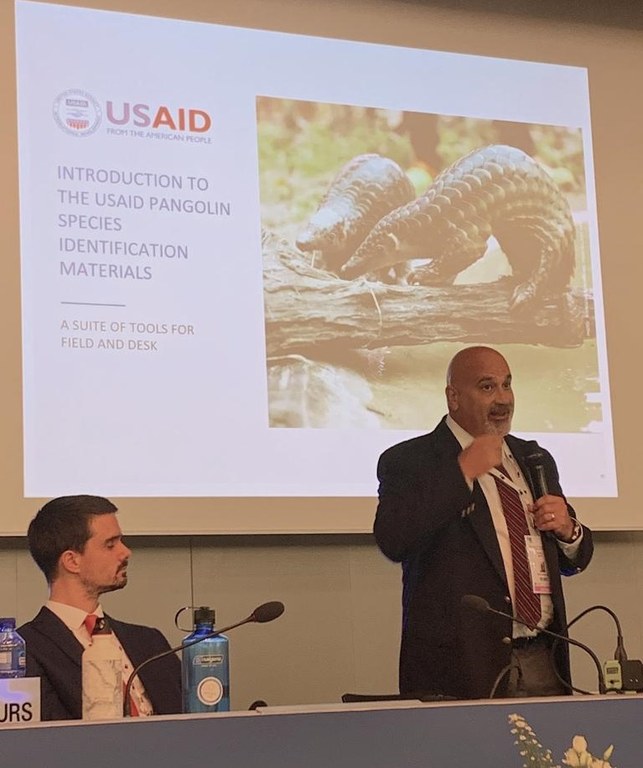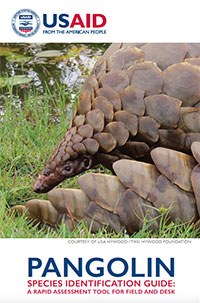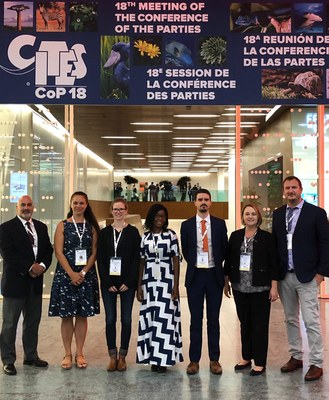USAID Presented Suite of Pangolin Species Identification Resources at World’s Largest Wildlife Conference
Developed by USAID Wildlife Asia specifically for law enforcement officers, the collection includes printed and digital identification guides and a smartphone application in ten languages (Chinese, English, French, Khmer, Lao, Indonesian, Malay, Portuguese, Thai and Vietnamese), and large format posters in four languages (Chinese, English, Thai, and Vietnamese).
Pangolins are considered one of the world’s most trafficked mammal. In 2016, CITES Parties voted at CoP17 to include pangolins in CITES Appendix I, the highest level of international wildlife protection. Accurately identifying the 8 pangolin species (four in Africa and four in Asia) in law enforcement seizures is key for determining where the smuggled pangolins or scales originated from. Knowing the origin and/or transit countries helps identify trafficking routes, which is critical information for wildlife crime investigations.
USAID Wildlife Asia’s Law Enforcement Specialist Mr. Salvatore Amato presented the resources during the Pangolin Population Monitoring Side Event on August 19, 2019.Also unveiled at the event was USAID’s online Pangolin Species Identification Portal which provides simple one-click access to all of these resources via smartphone, tablet, laptop, and desktop.
Formally launched on World Pangolin Day 2018 (February 17), USAID Wildlife Asia previewed the printed Pangolin Species Identification Guide at the November 2017 CITES Standing Committee meeting in Geneva. The CITES Secretariat subsequently made the digital version available on the CITES Virtual College, the World Customs Organization Environet platform, and distributed the guide among the International Consortium on Combating Wildlife Crime partner organizations.
The Pangolin Species Identification Portal can be accessed at https://www.usaidwildlifeasia.org/pangolin-guide




